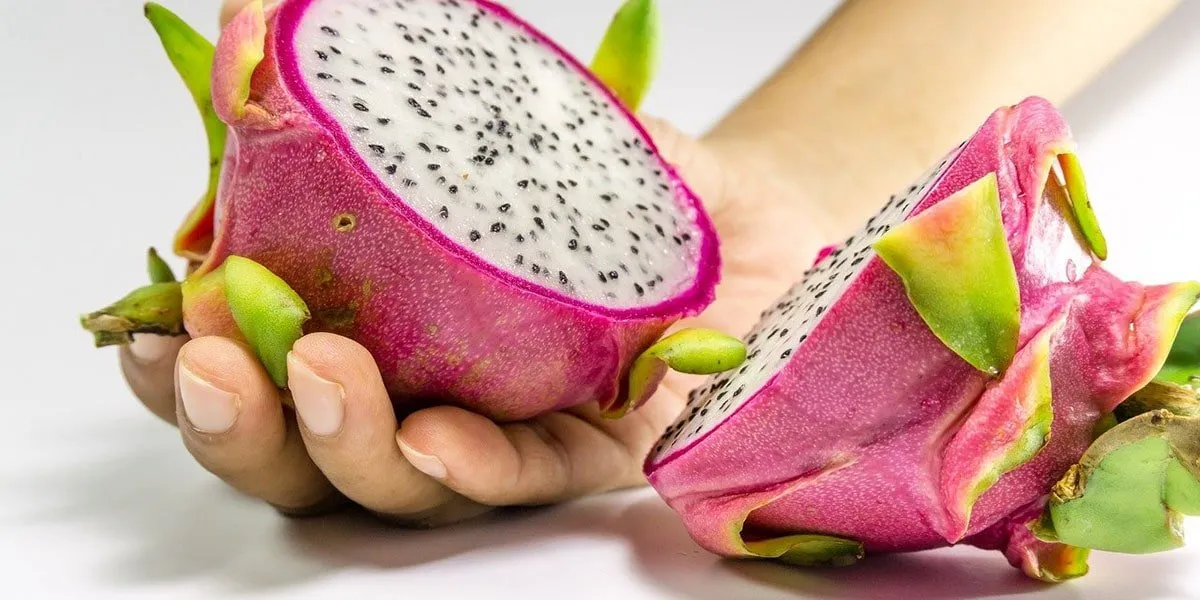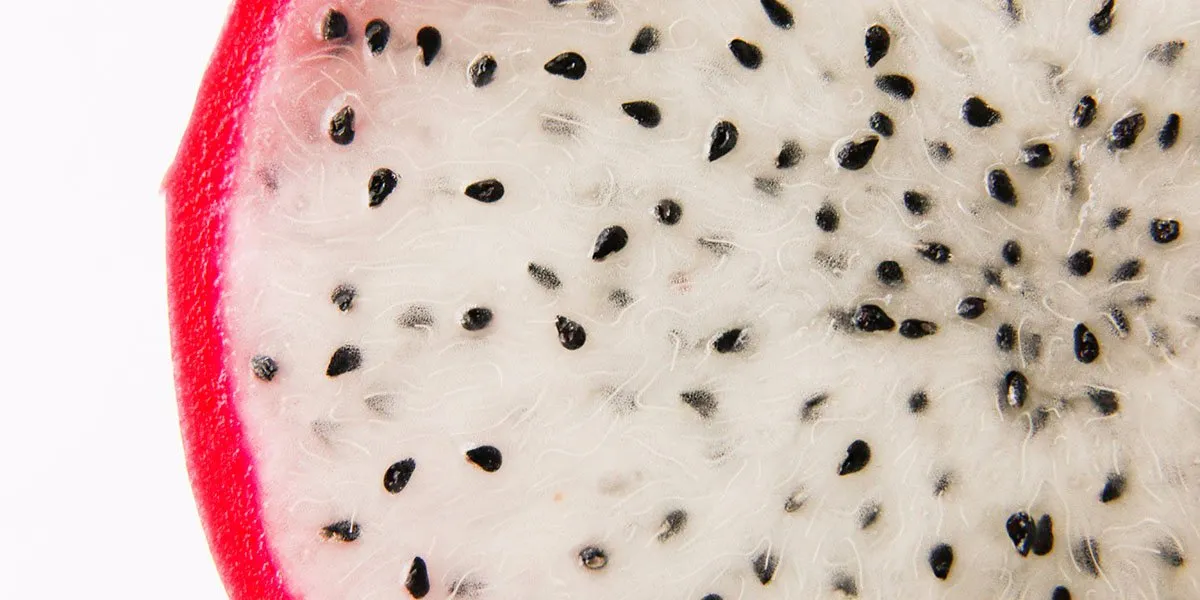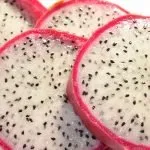Fruits aren’t always ready to be consumed right away, sometimes you have to wait a few days before they are ripe. For the exotic dragon fruit (also known as pitaya, some call them pitahaya), knowing when you can start eating one does require some skill.
There are a few telltale signs that give away when a dragon fruit is ripe:
- Look at the brightness of the skin color;
- Assess the smoothness of the skin;
- Press the skin to feel the level of softness (or hardness);
- Look at the state of the spiky-looking leaves on the skin;
- Notice the presence of any (brown) spots.
Use all your senses to learn when that pink-white delicacy is ready for consumption. Looking and touching the fruit is the most important here. Let’s explore together which signs to look for!
1. Bright Skin Color
The first obvious sign that dragon fruit is ready to eat would be the brightness of the skin. While unripe fruits are green, ripe dragon fruits are generally bright in color (pink or yellow depending on the variety). Feel if the skin is not as hard anymore before you cut it open.
Ideally, the bright color would be even across the whole skin, with little to no brown blotches or uneven sections.
To avoid uneven parts from developing, make sure to store the fruit in a cold, dark place. You can store dragon fruit in a fridge to keep it from ripening faster, or at room temperature if you want to consume it within the next few days.
2. Smooth Skin Texture
The second thing to look out for is the texture of the dragon fruit skin. This should be smooth and, like mentioned before, evenly colored. If there are too many inconsistencies, chances are that you’re dealing with overripe fruit.
If the skin becomes too wrinkled it is old, chances are that the dragon fruit has gone bad already in that case. A few blemishes and small brown inconsistencies won’t matter. But if there are too many of them, the pitaya might have been there for too long as well.

3. Skin Shouldn’t Be Hard, Nor Soft
Much like you would do with a kiwi or melon, pressing the skin of the fruit with your thumb helps you assess how old it is. You want to feel how much the skin gives in when you press it. A very hard skin means unripe, while a very soft skin means overripe.
Ideally, a ripe dragon fruit skin should give in a little bit when pressing on it. There should be some resistance, but not a lot. When the skin is still hard, let it sit for another day or two. When the skin is too soft, it might have gone bad already.
Assessing how hard or soft the fruit should be is not an exact science. You have to feel the fruit to know its ripeness, and take an educated guess. With experience, you will get better at it, but every individual fruit is different.
4. Dragon Fruit Leaves Start Drying Out
As soon as the characteristically green leaves on the skin start to dry out, it will be practically ready to eat. If the dry leaves have withered away for a long time, the dragon fruit is likely too old.
It’s best to use the changing leaves only to assess if the fruit is no longer unripe. It will mean the fruit is either ready to eat, or has gone bad. Assess this with the other assessments at your disposal – here’s how to know the pitaya is no longer edible.
Unripe pitayas will have tough green leaves on them, which almost look like the scales of a dragon. That’s where the fruit got its name from, after all!
5. Absence Of Brown Spots
A small speck here and there won’t make a difference, but too many brown spots mean the fruit has gone bad. You want to either cut away the bad-looking bits, or throw away the fruit as a whole if too many blotches have appeared.
This goes back to the bright (usually pink) color and the smoothness of the exterior we discussed earlier. You want a healthy-looking fruit without inconsistencies. Brown spots indicate rot, and you want to have as little of it as possible.
Hopefully, this overview has helped you assess if your dragon fruit is ready for consumption. To be fully certain, cut it in half with a large kitchen knife. Cut away any brown bits, if they are present. You can make parts or little cubes from the juicy flesh, or simply scoop it out with a spoon!



